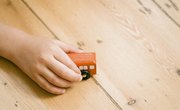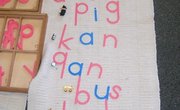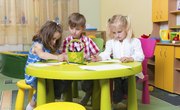One of the biggest mistakes a person can make is to underestimate a small child. Just because the coordination has not gotten up to speed yet does not mean a child cannot understand what is happening or learn from simple activities. Standing and walking are important, along with communication skills, such as singing. It is also a good idea to teach abstract skills or learning to count and recognize numbers or spell commonly used words, such as the youngster's name.
Standing and Walking Activities
The promise of something fun is a good way to encourage a child to learn to stand or walk. Place a treat or favorite toy just beyond the reach of the child, and encourage her to stretch and then stand in order to reach the prize. Once the child is able to walk while holding onto an object, take this reaching game to a new level, and teach the child to both stand and walk a few steps. Keep in mind that this may be a fun game, but it is also a lot of work for weak arms and legs, and you should not over do it. Also, keep it fun for the child by allowing her to achieve the prize, even if her performance was not what you had hoped it would be.

Talking and Singing
Learning to make specific sounds is the first step in talking. Singing, on the other hand, encourages more than just making sounds, it also helps a child learn to understand vocal patterns, harmony and pitch. Sing along with music, and encourage the child to sing with you, as well. Once he does start to sing, smile and clap and make him feel good about the accomplishment. It is not necessary to get the words or tune correct, just to have fun making a wide variety of sounds and to practice how to vocalize in meaningful ways.

Hide and Find Games
Hiding and finding teaches a child abstract skills and problem-solving techniques. Even something simple, such as covering her with a towel and then touching and naming various covered parts, such as a foot or elbow, helps her associate objects and understand that just because something is not visible, it still exists. Try hiding a favorite toy and then playing the "hot or cold" game to help the child find it.
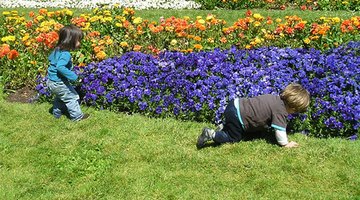
Counting Fun
Teaching a child to count is easier by using a reinforced technique that alternates between naming the number ("seven") and then displaying the shape of a number (7). Focus on a specific number each time you play, and once the child has learned to recognize that number, mix it into a group of other numbers, and play a game involving the correct number in the group.

Play with Words
Make or buy a set of large letters, and color the letters of your child's name so that they are brighter than the other letters. Use these letters to first teach your child to recognize the different letters in his name and then to pick those letters out of a group of many different ones. One variation on this game is to make a grid of letters, and teach him to identify his name in the grid. This game can quickly progress to playing simple word-search games and will help him both learn to read and enjoy reading.
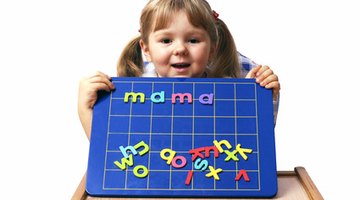
Related Articles
Writer Bio
Roger Golden began his career as a writer in 2008, when he began writing weekly insurance and personal finance articles. Golden's work has appeared on eHow, USAToday.com, TheSpoof.com and his privately managed blogs, .modern Dislogic and Outdoors—Dixie Style.



